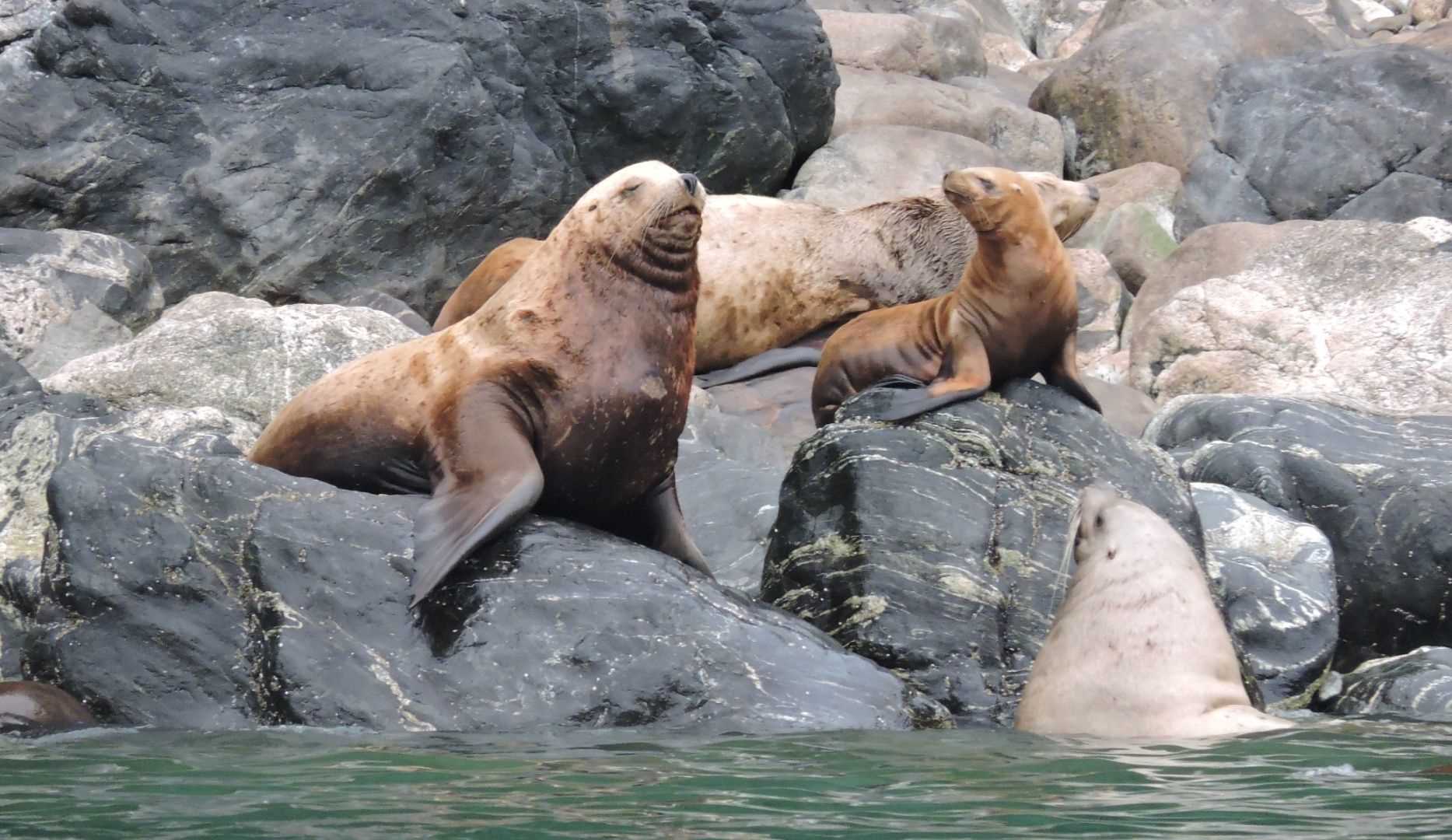We spent the morning exploring by expedition watercraft and cruising around the Inian Islands. This small island group is central to the northern entrance of Alaska’s famed Inside Passage. Located in Cross Sound, this is an ideal spot to observe marine wildlife, and by that measure we were not disappointed. From the ship’s anchorage near a bay called the Hobbit Hole, a half-dozen humpback whales were sighted blowing in the South Channel. This being realized, our guides took guests in for a closer look. We saw one episode of cooperative bubble-net feeding (a feeding strategy unique to Southeast Alaskan humpback whales), then several more coordinated diving events. When we reached the mouth of the South Channel, we found ourselves facing an assertive incoming tide, which jostled the watercraft with choppy, upwelling waves, whirlpools, and very strong currents capable of reaching as high as nine knots! It was great fun. Better yet was the multitude of Steller sea lions swimming all around us in the swirling currents. These are impressive animals: a full-grown male can approach 2,200 pounds (1,000 kilograms), which is considerably larger than a coastal brown bear (Figure A). Many of them came quite close to the boats and several were observed catching and eating fish (Figure B).
Some of us were lucky to witness a rarely seen occurrence of a sea otter climbing out of the water up onto an algal-covered rock to rest (Figure C). Perhaps he just wanted to get out of the strong current. In a protected cove on the main Inian Island, we examined a patch of bull kelp and found one sea otter preening and rolling in a way that would have induced envy among the best contortionists, while a couple others were nestled within the kelp and resting (Figure D).
More humpback whales were sighted within the channel mouth, including one deep inside a little bay where one wouldn’t have thought it possible. Yet another high point during the cruise was our passage through the narrow, kelp-dense channel of Mosquito Pass, which provided a shortcut back to our beloved vessel.
The afternoon found us anchored off the northern coast of Chichagof Island near a place called Fox Creek. This gave us another opportunity to hike within a beautiful coastal forest. Outside the forest is an extensive meadow of ferns, grasses, and flowering plants, which is obviously being overrun by an extending forest of mostly Sitka spruce trees. This happens when a meadow dries due to isostatic rebound (land rise resulting from the removal of an immense weight of ice that covered and depressed the region long ago). From the low-tide, exposed, barnacle-encrusted rocks of the shoreline, we hiked through the meadow, into the forest proper. Conveniently, there were bear trails crossing between terrain, including a classic “perennial” bear trail where bears carefully step in the same footfalls over long periods of time (Figure E). So, it was fairly easy to work our way through the forest, over several mostly dry small streambeds, to the main run of Fox Creek. Because the recent weeks have been rainless, an unusual situation for summertime in Southeast Alaska, the creek was barely flowing. This is a problem for the spawning salmon near the river mouth, waiting (impatiently it seemed from all the jumping) for a better flow of water. We all hoped rain would come soon to the region for the betterment of the area’s trees, mosses, berry bushes, meadow flowers, etc., and of course – the salmon rivers.
Besides hiking, our guests were able to explore some of the nearby waters with kayaks. This was a more energetic endeavor than our typical kayak opportunities, because it entailed a one-way voyage around an offshore island. The paddlers encountered both a strong current and a bit of wind, but of course the current and wind were only against them part of the way, and with them for the remainder.









